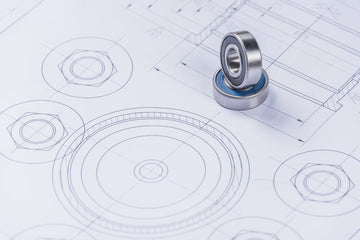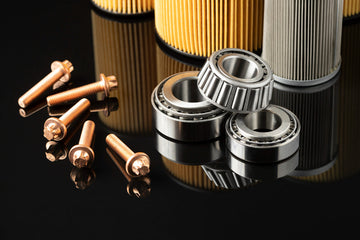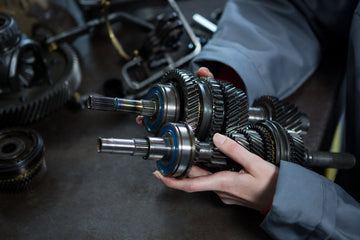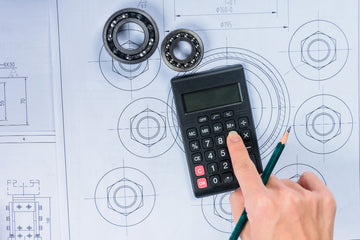Bearings play a very crucial part in numerous varieties of various gears and machines. They lessen the wear between moving parts, and facilitate the correct functioning. But in the long run, bearings may become worn out and/or damaged thus deteriorating the overall performance of your equipment. It is important to know how to take away and substitute bearings effectively since this determines whether you will need to requisition expensive repairs.
We will take you through the process of bearing removal and installations step by step to ensure you would not damage your machine in the process. This book will be useful to both specialists and laymen who are interested in affordable and effective methods.
Why Bearings Are Crucial for Seamless Machine Performance
Before jumping into the process of removing and replacing bearings, one should probably realize what HP bearings do and why they are important. Bearings are used to support rotating shafts and also to diminish the friction between stationary and moving parts. They are available in various forms that include Industrial ball bearings, roller bearing and needle bearing that can be applied in different applications.
Worn or damaged bearings may result in large amounts of vibration, noise, and even equipment failure. At the right time, replacements will guarantee long life and efficiency of your machine.
Signs That Indicate Bearing Replacement Is Needed
It is as crucial to know when bearings need to be replaced as how. Some of these are peculiar sounds like noise-making, grinding, squealing, more vibration, overheating, and open wear or corrosion. As soon as you observe one of the symptoms, the time to check the bearings has come and replace them.
Removal of Bearing Preparation
Planning is essential in order to prevent breakages in the process of removal. You will have to get the equipment ready and it can potentially consist of specific bearing puller, wrenches, mallet, cleaning agents. Make sure you possess safety tools such as gloves and goggles.
One needs to clean the space around the bearing before the process begins, so as not to have any dirt or debris in the machinery. As well, you should ensure you cut power disconnection as an accident prevention measure.
Step-by-Step Guide to Removing Bearings Safely
This is done carefully and patiently, with the right technique, when it comes to the removal of bearings. Then start by loosening any fasteners or retaining rings that may be holding the bearing in place. Insert a bearing puller and spread pressure all over reaching outward pressure and turn the bearing out of the shaft. It is not to be done with excessive force, or with prying tools, apt to injure the shaft or housing.
On sticky bearings, with rust or corrosion, a penetrating lubricant may alleviate the problem by leaving it to seep - a careful wash afterwards. Moving around the outside circumference of the bearing with a mallet might help loosen it, just tap softly to make sure you do not hit hard.
Then after the removal of the bearing, examine the shaft and housing to find the signs of weariness or breakages. Before fitting of the new bearing, clean up these parts.
Selecting the Right Replacement Bearing
The selection of the right replacement bearing points to the performance of the equipment. Nevertheless, it is always necessary to refer to the manufacturer specifications regarding size, type and the load rating. Applying a bearing that is not of these requirements may provide premature failure or harm.
It is also good that when acquiring bearings, one buys them in authoritative dealers to have guarantees of quality and reliability.
Installing the New Bearing Without Damage
With a new bearing, removal is judged as important as installation. Apply thin layer of lubricant to the bearing and shaft before installing the bearing. Position the bearing in place doming to the shaft continuously stopping and pressing the bearing into position. Installing bearing with the aid of any bearing installation tool or using a soft mallet and tapping the bearing evenly around the outside edge aids in the prevention of either damaging the bearing or shaft.
You should never force anything against the inner ring directly, since this may serve to damage the bearing internally. Make sure the bearing is completely and properly seated in the housing.
Post-Installation maintenance and checks
Turn the shaft manually after servicing the new bearing to ensure that is working fine. You should listen to any suspicious noises or feel resistance to it, which may be a sign of contravened installation.
Preventative measures, e.g. lubrication, timely inspections, etc will increase the life of your bearings and equipment. Cleaning your machinery and maintaining it helps you avert failure of the bearing.
Most Typical Errors to Evade in the Work with Bearings
This is one of the greatest errors that can be done; it entails dispatching the removal or fixing process. The use of excessive force and/or the use of the wrong tools may permanently damage bearings and certain parts of the machinery. Failure to clean parts prior to installation may add contaminants which may cause early failure of bearings.
Compilation of safety instructions and manufacturer instructions will always make the process of replacing the bearing a success.
Minimize Bearing Handling Problems to Protect Your Equipment
Bearing removal and replacement is an aspect of being skilled to be able to remove and replace the bearings of the equipment without damaging the said equipment without damaging any part of the equipment. With proper preparations, implementing proper methods and carrying out an inspection, one can ensure the efficiency and the duration of life that the machinery possesses.
In case you want high-quality bearings and professional advice, Bearmax USA is the right place to find the extensive variety of trusted products that might fully satisfy your equipment. Taking good care and replacing bearings at the right time will save you time and money as well as headaches in the long term.





